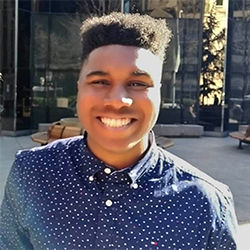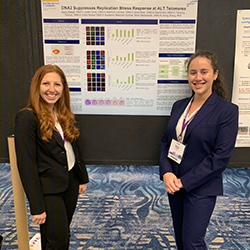Research & Education
Current Research
CANCER DEVELOPMENT AND CANCER PREVENTION
Claude Gagna: Characterizing the structure and function of alternative (e.g., Z-DNA) and multi-stranded DNAs (e.g., triplex and quadruplex nucleic acids) in normal and diseased tissues. Examining cell death [i.e., apoptosis and terminal differentiation (denucleation)], and DNA repair mechanisms influenced by alternative and multi-stranded DNA structures.
Bryan Gibb: DNA damage repair and development of tools for genome engineering applications (CRISPR, Cas9).
Niharika Nath: Dual roles of the gaseous mediators nitric oxide and hydrogen sulfide in carcinogenesis. Nitric oxide-releasing NSAIDs as agents for cancer prevention.
Dong Zhang: DNA damage response, DNA repair and tumorigenesis.
Haotian Zhao: Leptomeningeal metastasis and rare pediatric brain cancers.
CANCER THERAPEUTICS
Dong Zhang: Targeting DNA repair and the alternative lengthening of telomeres (ALT) pathway for cancer therapy.
Claude Gagna: Develop and commercialize the next generation of DNA microarrays for enhancement of research and development in drug discovery and development.
CANCER DIAGNOSIS
Azhar Ilyas: Micro/Nanotechnology for early cancer detection.
CANCER EPIDEMIOLOGY
Bhuma Krishnamachari: Epidemiology of hereditary cancers.
CANCER GENOMICS
Leonidas Salichos: Genomics of hereditary cancers.
COMPLEMENTARY THERAPIES FOR CANCER CONTROL
Amerigo Rossi: Non-mainstream practices such as physical activity and nutrition to enhance standard medical treatment for cancer patients and survivors.
CLINICAL ONCOLOGY
Maria Plummer: Gross and micro diagnoses of cancers in cadavers used for anatomy to teach medical students.
Education Programs
Undergraduate Education Related to Cancers
- Courses offered: BIOL 461 Cancer Biology, 3 credit
Students research activity and spotlights:

Donnell Perkins, B.S. Life Science, Biomedical Engineering ’20, presented his research on cervical cancer detection at the 2020 Sigma Xi Virtual Student Scholars Symposium on May 14, 2020. Perkins utilized his work study hours with mentor Niharika Nath and coauthors Raghul Elangovan and Amit Hiremath, both master’s-level computer science students. He examined how to use morphology and texture features to detect precancerous cervical cells from pap-smear images containing mostly normal cells and very few abnormal cells. He generated algorithms that used gray level co-matrix features of texture such as homogeneity, correlation, and energy to examine simulated mixed images of normal and abnormal cells, applying the results to pap-smear images from the hospital dataset. From the simulated and hospital data, he found that one distinctive gray level co-matrix texture feature could discriminate an abnormal cell among a population of normal cells. This cross-disciplinary research project pursued by Perkins provided another method of image-based analysis for the detection of cervical cancer. On June 1, 2020, Perkins joined the company MirrorMe3D as a biomedical engineer I.
Graduate and Medical Education Related to Cancers
Students research activity and spotlights:

Student organizations and activism on cancer awareness
The Student Organization for Hematology and Oncology (SOHO) aims to increase awareness about cancer within the osteopathic community and promote prevention through education and community service.
Our organization also aims to educate students about relevant osteopathic approaches to treating cancer patients and provide a forum for students to learn about opportunities and networking within the specialty.
SOHO also serves as a platform to discuss the latest research and literature related to the fields of hematology and oncology. Soho’s two main fundraisers are for Movember and St. Baldrick’s for children with cancer.